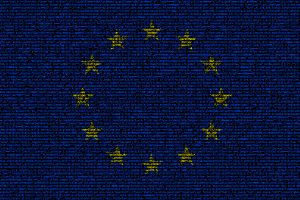On June 29, 2023, in Abitron Austria GmbH v. Hetronic International, Inc., 600 U.S. ___ (2023), the U.S. Supreme Court held that the Lanham Act could not extend to trademark infringement that occurred almost entirely outside the United States. While it is not surprising that the Court adhered to the longstanding presumption against extraterritorial application of U.S. law, the rationale underlying its decision may complicate future U.S. trademark actions to stop foreign-sourced counterfeits.
Finding the Right Note: ASCAP AI Initiatives
On June 13, 2023, the American Society of Composers, Authors and Publishers (ASCAP) announced a series of initiatives to guide and protect creators as artificial intelligence (AI) continues to develop and impact the music industry. ASCAP has a strong history of supporting artists, technological innovation and music royalties. Following in suit, ASCAP’s AI initiatives consist of a series of events and principles that seek to promote AI education, innovation and implementation in the music industry, and ensure that artists are justly compensated. The initiatives include the 2023 ASCAP Lab/NYC Media Lab Music and AI Challenge, the ASCAP Experience, the ASCAP AI Symposium, and ASCAPs AI Principles and Advocacy.
“Bad Internet?”: Disparaging and Unsubstantiated Claims in Comparative Advertisements
On May 5, 2023, the National Advertising Division (NAD) of BBB National Programs handed down its Final Decision in T-Mobile USA, Inc. v. Comcast Cable Communications Management, LLC. The NAD found that Comcast made several express and implied claims that were disparaging and/or unsubstantiated regarding T-Mobile’s home internet service, T-HINT, by way of television and online advertising. The decision is a useful reminder that advertiser claims must be (1) truthful, (2) not misleading, and (3) supported by a reasonable (and often evidentiary) basis.
The EU’s Proposed Artificial Intelligence Law Enters Final Stage
 The European Union (EU) has made steady progress in shaping its proposed AI law, known as the “AI Act.” With the European Parliament approving its preferred version, the AI Act has now entered the final stage of the legislative process (a three-way negotiation, known as “trilogue”). The aim is to agree to a final version of the law by the end of 2023. The EU’s objective is to ensure that AI developed and utilized within Europe aligns with the region’s values and rights, including ensuring human oversight, safety, privacy, transparency, non-discrimination, and social and environmental well-being.
The European Union (EU) has made steady progress in shaping its proposed AI law, known as the “AI Act.” With the European Parliament approving its preferred version, the AI Act has now entered the final stage of the legislative process (a three-way negotiation, known as “trilogue”). The aim is to agree to a final version of the law by the end of 2023. The EU’s objective is to ensure that AI developed and utilized within Europe aligns with the region’s values and rights, including ensuring human oversight, safety, privacy, transparency, non-discrimination, and social and environmental well-being.
SCOTUS Holds Rogers Test Is All Bark and No Bite in Jack Daniel’s Trademark Suit Against Dog Toy Maker
On June 8, 2023, a unanimous U.S. Supreme Court resolved the petition in Jack Daniel’s Properties, Inc. v. VIP Products LLC with two narrow holdings: (1) the threshold trademark infringement test espoused by the Second Circuit in Rogers v. Grimaldi for “expressive” works does not apply to allegedly infringing trademark use; and (2) humor and parody does not constitute “non-commercial use” within the meaning of the Lanham Act’s exclusion from liability for trademark dilution. In so doing, the Supreme Court reversed the Ninth Circuit’s ruling and remanded to the District Court, leaving questions about the continued viability of the Rogers test, as well as the bounds of the Lanham Act’s “non-commercial use” exclusion from dilution liability.
The U.S. Copyright Office Sessions: Generative Artificial Intelligence in Music and Sound Recordings
On May 31, 2023, the U.S. Copyright Office (USCO) held the final session of its Spring 2023 AI Listening Session. This session was held across two panels and discussed the copyright implications of AI-generated content (AIGC) in music and sound recordings. The panelists consisted of various stakeholders in the music industry such as founders of AIGC music companies, songwriters, professors, and counsel to music and streaming companies.
Power Grids and Points of Vulnerability: Keeping the Lights on Amid Cybersecurity Concerns
 Although that new smart refrigerator might seem like a fun gadget and great way to sync up grocery lists, smart appliances have the potential to become vectors in malicious power grid attacks. Or what about the increasingly popular addition of a solar plus storage solution or an EV charging station in individual homes? These home energy hubs, connected to the power grid and often linked with a host of devices via a mobile phone, pose another layer of risk that is only beginning to be explored. As the World Economic Forum draws attention to a worldwide “cyber pandemic,” electrical grid breaches remain an ongoing point of alarm. Power grids are more exposed than ever to cyberattacks, thanks in part to the vast expansion of (often poorly secured) consumer internet-connected devices, large remote-work networks and new smart grid technologies that connect power meters remotely to aging grid infrastructure. As we look to the future, the rapidly evolving technologies that are necessary to enable distributed energy resources and virtual power plants, such as residential energy storage, home energy hubs and EV bidirectional charging (V2H, V2G or V2X), have the potential to dramatically redefine those risks—for the better or the worse.
Although that new smart refrigerator might seem like a fun gadget and great way to sync up grocery lists, smart appliances have the potential to become vectors in malicious power grid attacks. Or what about the increasingly popular addition of a solar plus storage solution or an EV charging station in individual homes? These home energy hubs, connected to the power grid and often linked with a host of devices via a mobile phone, pose another layer of risk that is only beginning to be explored. As the World Economic Forum draws attention to a worldwide “cyber pandemic,” electrical grid breaches remain an ongoing point of alarm. Power grids are more exposed than ever to cyberattacks, thanks in part to the vast expansion of (often poorly secured) consumer internet-connected devices, large remote-work networks and new smart grid technologies that connect power meters remotely to aging grid infrastructure. As we look to the future, the rapidly evolving technologies that are necessary to enable distributed energy resources and virtual power plants, such as residential energy storage, home energy hubs and EV bidirectional charging (V2H, V2G or V2X), have the potential to dramatically redefine those risks—for the better or the worse.
In Andy Warhol Foundation for the Visual Arts v. Goldsmith, the Supreme Court Revisits the Copyright Fair Use Test
On May 18, 2023, the U.S. Supreme Court found that the purpose and character of the use of “Orange Prince” by the Andy Warhol Foundation for the Visual Arts (AWF) weighed against a finding of fair use of Lynn Goldsmith’s photograph of the artist known as Prince.
The decision’s implications go far beyond Warhol, Goldsmith and Prince, with the potential to impact stakeholders across industries, including fine art, film, software, music, publishing, fashion, and all other industries affected by copyright.
Implementing a Policy for Employee Use of ChatGPT in the Workplace
 The use of generative AI tools, like ChatGPT, are becoming increasingly popular in the workplace. Generative AI tools include artificial intelligence chatbots powered by “large language models” (LLMs) that learn from (and share) a vast amount of accumulated text and interactions (usually snapshots of the entire internet). These tools are capable of interacting with users in a conversational and iterative way with a human-like personality, to perform a wide range of tasks, such as generating text, analyzing and solving problems, language translation, summarizing complex content or even generating code for software applications. For example, in a matter of seconds they can provide a draft marketing campaign, generate corresponding website code, or write customer-facing emails.
The use of generative AI tools, like ChatGPT, are becoming increasingly popular in the workplace. Generative AI tools include artificial intelligence chatbots powered by “large language models” (LLMs) that learn from (and share) a vast amount of accumulated text and interactions (usually snapshots of the entire internet). These tools are capable of interacting with users in a conversational and iterative way with a human-like personality, to perform a wide range of tasks, such as generating text, analyzing and solving problems, language translation, summarizing complex content or even generating code for software applications. For example, in a matter of seconds they can provide a draft marketing campaign, generate corresponding website code, or write customer-facing emails.
The U.S. Copyright Office Sessions: “Artificial Intelligence and Copyright – Visual Arts”
On Tuesday, May 2, 2023, the U.S. Copyright Office (USCO) held the second of four sessions on the copyright implications of generative artificial intelligence (GAI), titled “Artificial Intelligence and Copyright – Visual Arts.”
The session focused on GAI issues relevant to visual works, and featured two panels with various stakeholders that brought a range of perspectives to the discussion. These panelists included representatives from GAI platform companies, graphic design software companies, think tanks, policy organizations, and law firms, as well as artists concerned by the impact of GAI.




